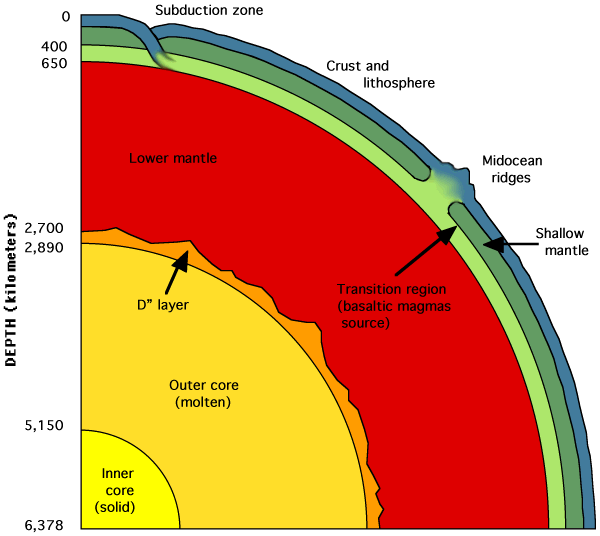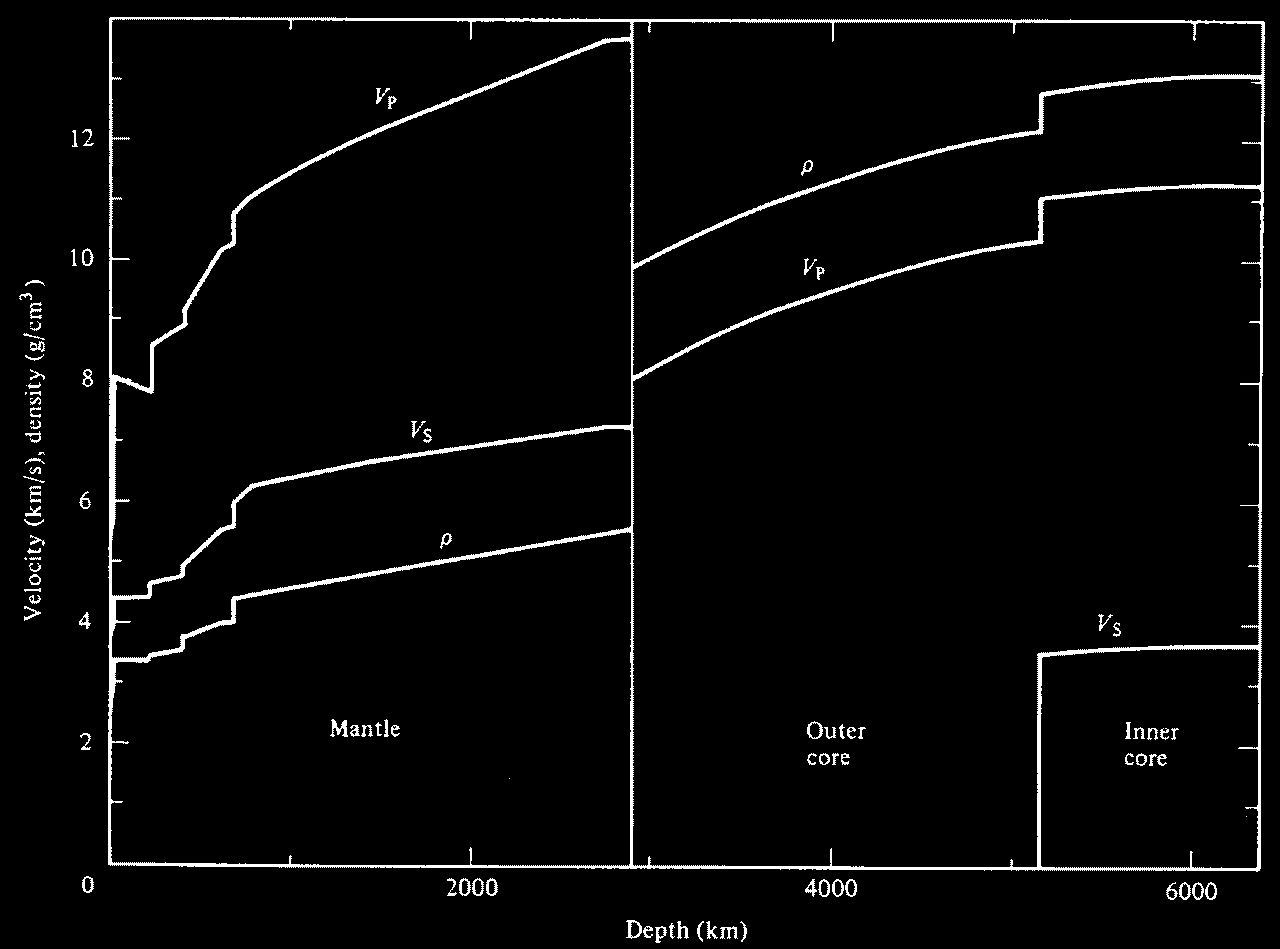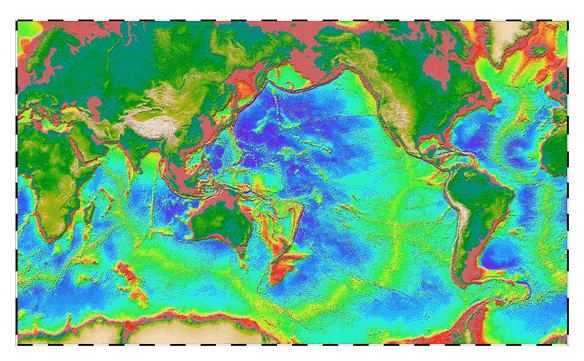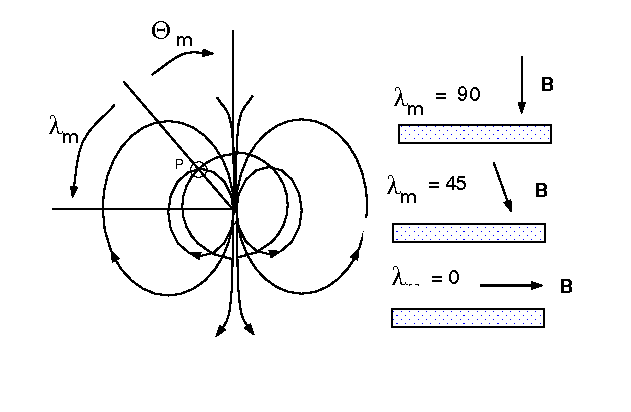see page 11 of the text book (Understanding Earth by Press and Siever)
The composition of the Earth has been figured out through a variety of
methods. The deepest drill hole is about 12 km deep and cost
over $100 million. Volcanoes bring up foreign rocks (known as
xenoliths) from several hundred km depth. Since the Earth is some
12,000 km in radius, our knowledge of the upper 200 km may be completely
irrelevant.
Nonetheless, we are fairly
confident of we know what the Earth
is made of because we can determine the chemistry of meteorites
born of the same womb, hence can be reasonably expected to
have the same chemistry. From analysis of these meteorites (and also
the composition of the Sun reveals that
the Earth is made up of Iron (35%), Oxygen (30%), Silicon (15%)
Magnesium (13%) and traces of the other elements.
If you pick up your ordinary everyday average rock, however,
you will immediately notice that it can't be 35% iron. In fact there
is no where near that much iron in the crust in general. Looking at
Figure 1.8 in the text, you will see that in fact the crust (which we
can study directly) has only a little Iron (6%). This means that the
iron must be "hidden".
From the orbits of satellites, we know that the Earth has a very dense core.
We therefore surmise that the iron that the Earth was born with migrated
at some point down to the core. Iron and a little nickle (which is also
missing in the crust) together have the right density to explain the
density structure of Earth.
Thus, the Earth is far from a
homogeneous body but has differentiated into a metallic core (radius of
about 6000 km) and a more
rocky mantle. We walk about on the less dense froth ejected from the
mantle known as the crust which varies in thickness from about 5km to
about 60 km.
Earth Statistics
(from here )
Mass (kg) 5.976e+24
Mass (Earth = 1) 1.0000e+00
Equatorial radius (km) 6,378.14
Equatorial radius (Earth = 1) 1.0000e+00
Mean density (gm/cm^3) 5.515
Mean distance from the Sun (km) 149,600,000
Mean distance from the Sun (Earth = 1) 1.0000
Rotational period (days) 0.99727
Rotational period (hours) 23.9345
Orbital period (days) 365.256
Mean orbital velocity (km/sec) 29.79
Orbital eccentricity 0.0167
Tilt of axis (degrees) 23.45
Orbital inclination (degrees) 0.000
Equatorial escape velocity (km/sec) 11.18
Equatorial surface gravity (m/sec^2) 9.78
Visual geometric albedo 0.37
Mean surface temperature 15°C
Atmospheric pressure (bars) 1.013
Atmospheric composition
77%
21%
2%
Composition of the Earth
Earthquakes and the Earth's interior
Earth Structure
Most of what we know about the Earth comes from
seismology, or the study of earthquakes.
When the Earth breaks, it quakes and
sometimes generates sound waves strong enough to blow
houses down. There are special "listening" stations that record these
sound waves called "seismometers". Large earthquakes can be "heard" the
world over and these seismic messages have travelled through the Earth.
Seismic Waves
For our purposes, there are two kinds of waves: compressional and shear waves. Compressional (or "P") waves push particles back and forth in the same direction as the wave itself is travelling (think of a slinky). Shear (or "S") waves push particles in a direction perpendicular to the wave propagation (think of "the wave" at a ball game). Shear waves cannot go through liquids. It is the absence of shear waves penetrating the core that tells us that the outer core is liquid.Reflection and Refraction
The speed at which these waves go and the manner in which they propogate is affected by the material through which they travel. Seismic waves can be reflected at boundaries with a high density contrast just as light is reflected by a mirror. They can also be refracted by travelling through layers of different densities just as light is refracted by water. (You probably have noticed that straight straws look bent when you see them in a glass of water - this is because the light has been refracted.)

Seismic waves going through the Earth
Because the seismic velocity changes substantially with depth in the Earth, seismic waves get bent, reflected and refracted at numerous boundaries. Knowing the time it took to get from the earthquake source to the receiving seismogram and the type of wave that propogated, much can be learned about the internal structure of the Earth. It is from the velocities of the P (Vp) and S (Vs) waves through the Earth that we know very well what the density (rho) structure of what the density (rho) structure of the Earth is:Gravity of the Earth
Measuring gravity also tells us something about the structure of the Earth. At first sight it might seem boring. gravity points pretty much down But! Early workers expected to find a huge gravity anomaly from the attraction of big mountains, but found none. no big anomaly from mountains From this we know that mountains have low-density roots. But again! Looking at tiny deviations in the gravity field, workers such as your professor Dave Sandwell produced such pretty maps as this.
Earth's magnetic field
The magnetic field of the Earth is more or less like that that would be produced if there were a giant bar magnet at the center of the Earth. One amazing fact is that the Earth's field sometimes switches polarity and compasses would point South! This happened last about 780,000 years ago and could happen again any millenia now. These facts confirm the existence of a fluid outer core made of pure metal. It is the motions in this core that produce the magnetic field.
Back to Top
Back to Syllabus Page
Back to Home Page
Lisa Tauxe
ltauxe@ucsd.edu




